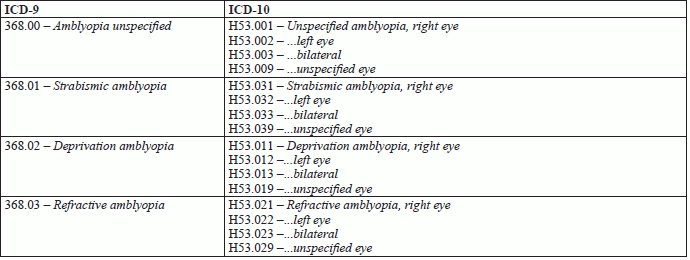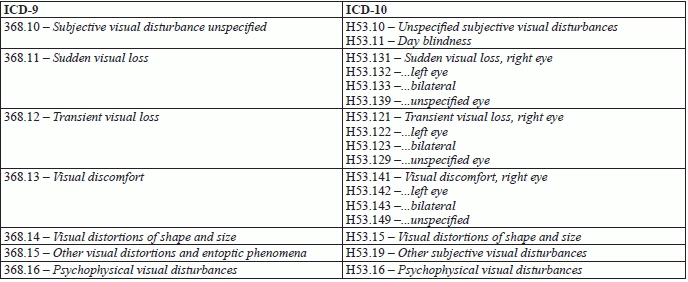Check These Visual Disturbances Dx Changes
Like many of the current diagnosis code sets, the range of codes describing visual disturbances is set to expand considerably once ICD-10 takes effect on Oct. 1 of this year.
Some of the ICD-9 codes in the 368.xx range (Visual Disturbances) will just get a one-to-one translation in ICD-10. Example: There will remain only one option for describing a diagnosis of double vision (diplopia) – under ICD-9 you would report 368.2, and under ICD-10 you would report H53.2
Other codes have been expanded to show laterality – whether the condition exists in the right eye, left eye, both eyes or an unspecified eye. Example: The single ICD-9 code for strabismic amblyopia (368.01) has been expanded under ICD-10 to a four-code range (H53.031-H53.039).
Here’s a look at how some of the visual disturbances Dx codes will change under ICD-10.
Amblyopia ex anopsia
Subjective visual disturbances
Diplopia (double vision)
Other disorders of binocular vision
There’s more: Look for an examination of the rest of the Visual Disturbances ICD-10 conversion, including visual field defects and color vision deficiencies, in an upcoming issue of Ophthalmology Coding Alert.
Get ready: For more information on the ICD-10 conversion, as well as specific ICD-9 to ICD-10 code bridges, visit https://www.aapc.com/codes/.




